Once, I was sitting with my former colleague in the dining room of the company where he works, and discussed the gossip of our former team. Quite unnoticeably for me, we switched to talking about hobbies. It was in Mountain View. I have long known that he is fond of creating different power units in his garage. That's what he did not know, that I studied for several years as a physicist, not a programmer. Since then, the love of applied physics in me has not faded.“Here, nearby, at Stanford, there is a Department of Energy linear accelerator operated by Stanford University. They conduct excursions for everyone. My wife will never agree to come with me. Let's go together?" - he said.- “Wow! Its cool! Of course let's go! My wife will not agree either. ” - I answered without hesitation.
By Peter Kaminski - United States Geological Survey, Public Domain, Link
From our villages, Mountain View and Sunnyvale, to the accelerator to go about half an hour. It all starts with the fact that you come to the parking center for visitors. Public transport does not go there, so it’s better to rent a car or use the Uber / Elevator. You can safely walk around the building and read the posters on the walls about the history of SLAC.At the beginning of the tour, all visitors are taken to a small room and shown a 10-15 minute, exciting video about the past and future of the accelerator. A small group of 10-15 people has 2 guides. I don’t know if they are the same people every time, but I’m very lucky. The first was the head of engineering. A person who makes sure everything works constantly. The second was an experimental physicist who uses an accelerator to get slow motion videos of chemical reactions at the atomic level. Both were very sociable and friendly.The entire territory of the accelerator is simply huge. These are dozens of buildings, various laboratories, even a sports hall. Some buildings are abandoned because their repair or reconstruction will cost a large amount.The oldest part (the room of the linear accelerator) is a perfectly straight building 3.2 km long. Until 2017, it was the longest direct building in the world. Walking around the complex is simply impossible. Therefore, for the whole group, SLAC kindly allocates a bus.At each stop for 10-20 minutes, either the engineer or the experimental physicist explain what is in front of us, what is its purpose and how it was built. The whole tour takes about 2 hours.The first stop is All Saints, the accelerator room, a gallery of klystrons that are installed every 10 meters:
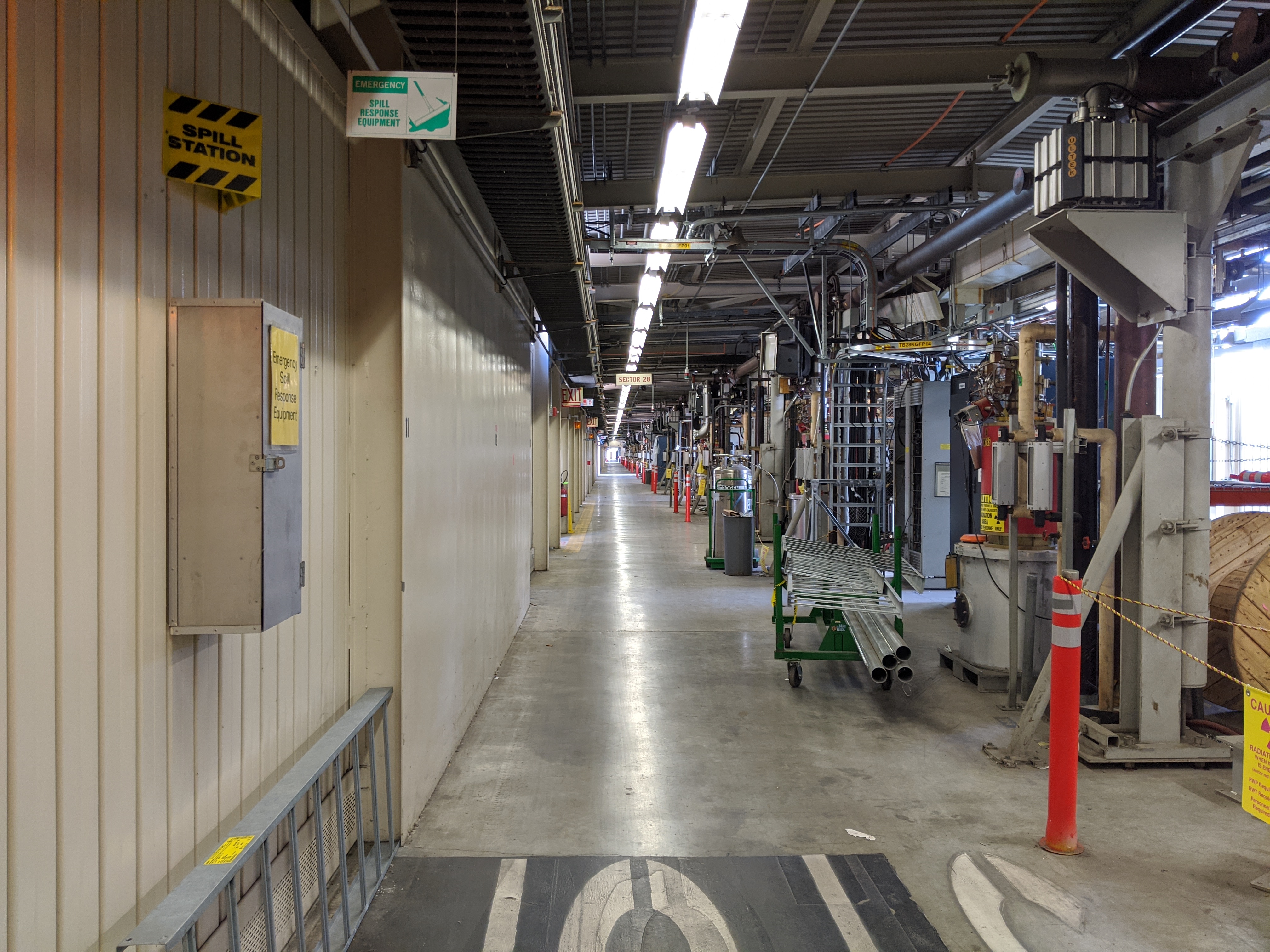
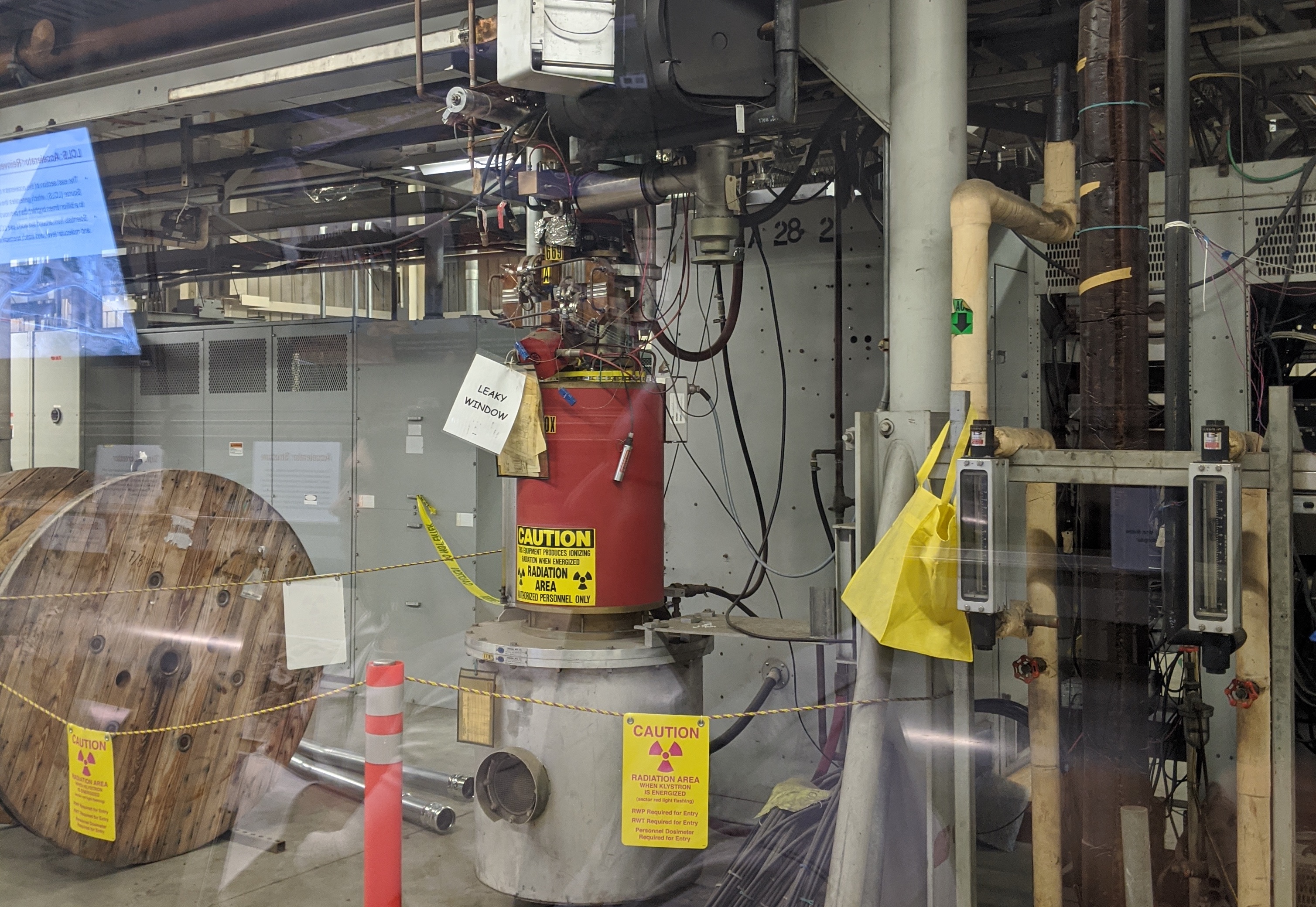 Excursions are held at the strictly allotted time when the accelerator is turned off for maintenance. Klystrons operate at a frequency of 200 Hz, which is simply unbearable for human hearing, taking into account their number. As the chief engineer explained to us, somewhere something constantly breaks. Therefore, more than 1,500 people work in SLAC, which ensures the operation of all systems. The linear accelerator itself is not the only experimental setup of the complex.After the main gallery, we are driven to the building in which charged particles will bombard the targets that the experimenters choose. The whole building is underground, for this you will find an exciting half-life walk (sorry for the blurry photo, but really wanted to share my association with Half-Life):
Excursions are held at the strictly allotted time when the accelerator is turned off for maintenance. Klystrons operate at a frequency of 200 Hz, which is simply unbearable for human hearing, taking into account their number. As the chief engineer explained to us, somewhere something constantly breaks. Therefore, more than 1,500 people work in SLAC, which ensures the operation of all systems. The linear accelerator itself is not the only experimental setup of the complex.After the main gallery, we are driven to the building in which charged particles will bombard the targets that the experimenters choose. The whole building is underground, for this you will find an exciting half-life walk (sorry for the blurry photo, but really wanted to share my association with Half-Life):
 Inside there are several laboratories. Each has its own color. Labs rummage between several research teams. Each team works for 12 hours. The change is randomly determined by drawing lots. Yes, yes, maybe you will get a shift from 10 pm to 10 am the next month.Anyone on the planet can apply to use the accelerator for their experiment. A group of scientists consider all applications and provide the accelerator to the most promising, from their point of view, ideas. On average, ten times more applications are received than the technical capabilities of SLAC.Our guide studies the chemical reactions of protein breakdown at the atomic and subatomic levels. This group of reflectors and mirrors directs a beam of high-energy x-ray radiation:
Inside there are several laboratories. Each has its own color. Labs rummage between several research teams. Each team works for 12 hours. The change is randomly determined by drawing lots. Yes, yes, maybe you will get a shift from 10 pm to 10 am the next month.Anyone on the planet can apply to use the accelerator for their experiment. A group of scientists consider all applications and provide the accelerator to the most promising, from their point of view, ideas. On average, ten times more applications are received than the technical capabilities of SLAC.Our guide studies the chemical reactions of protein breakdown at the atomic and subatomic levels. This group of reflectors and mirrors directs a beam of high-energy x-ray radiation:
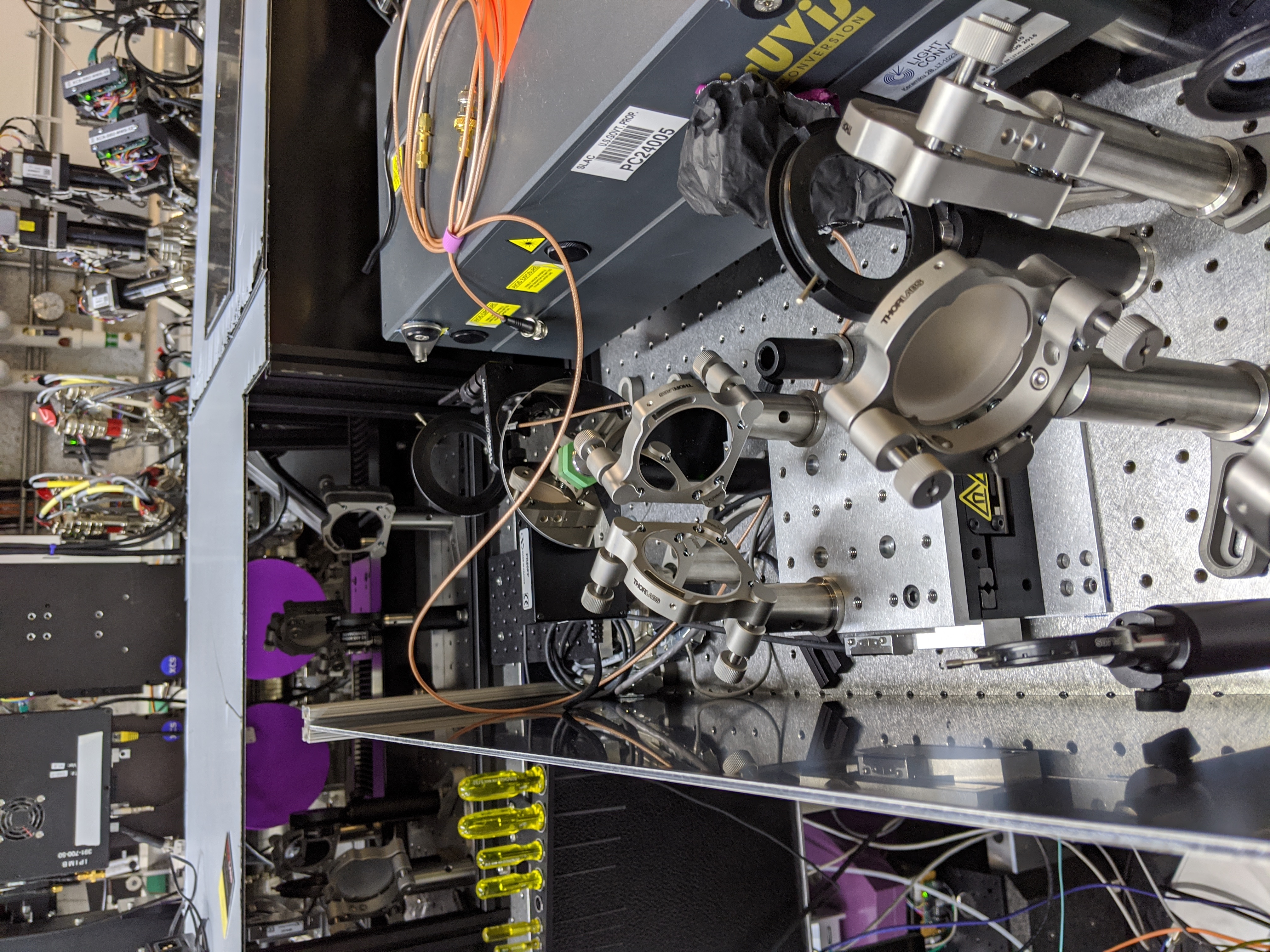
 Through this pipe to the target:
Through this pipe to the target: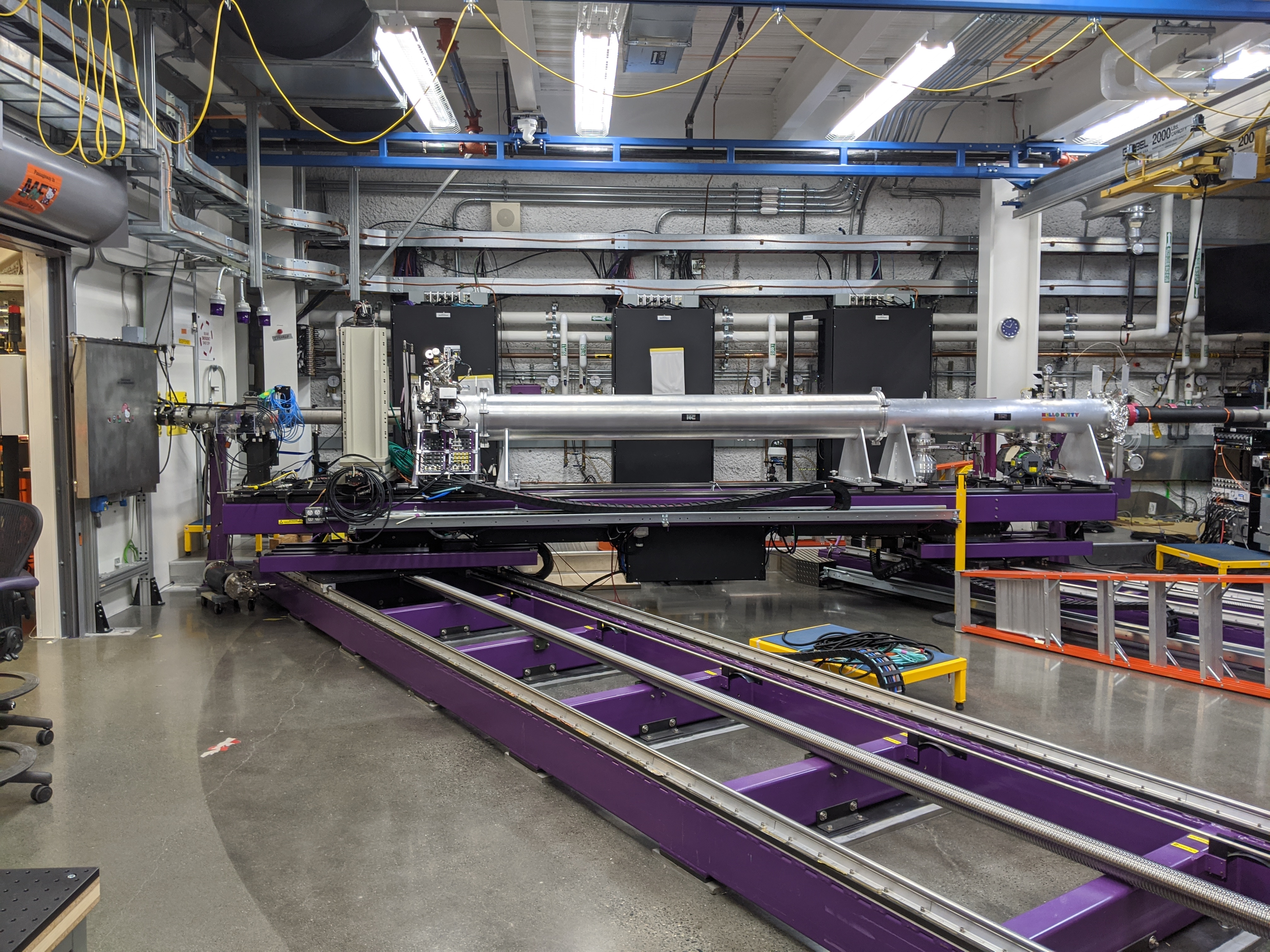
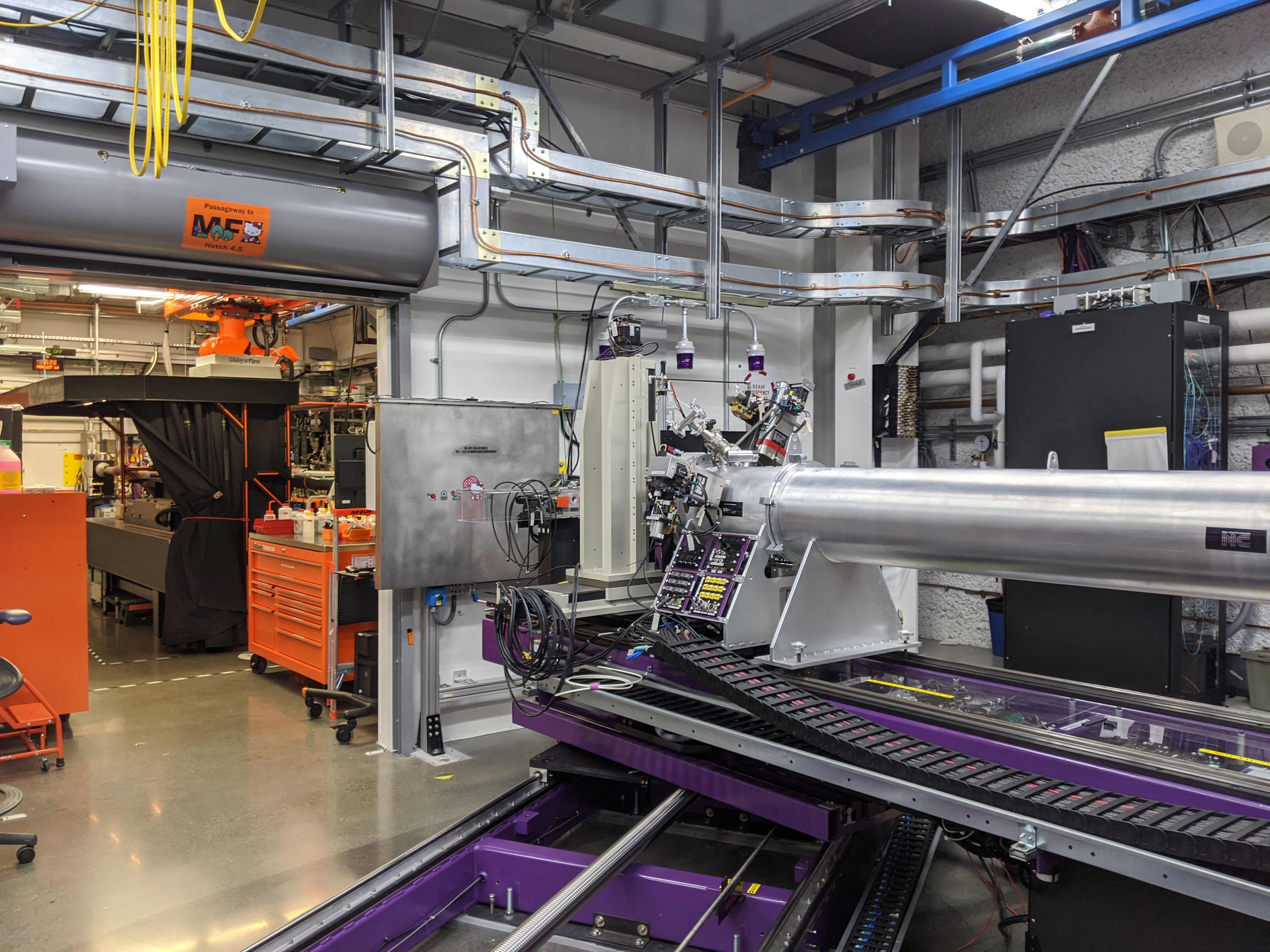 On the left you can see the “orange” laboratory, the purpose of which I have no idea. We are allowed to walk around all the premises, to feel everything that seems safe and palpable. The chief engineer and physicist, whose application has been approved and which is now conducting its research on this equipment, will gladly and in great detail answer any questions.If you are planning a visit to San Francisco and its environs and want to go on an excursion, you will need a free ticket . I had a driver’s license with me, but no one asked me to show it.In addition to excursions, SLAC organizes holidays in honor of the opening of new parts of the laboratory, which anyone can attend, open lectures and just gatherings. I look forward to the announcement of the opening of the updated cryogenic-cooled accelerator. In addition, experimental physicists are sometimes invited to drink coffee or beer with them , to talk about physics and for life .
On the left you can see the “orange” laboratory, the purpose of which I have no idea. We are allowed to walk around all the premises, to feel everything that seems safe and palpable. The chief engineer and physicist, whose application has been approved and which is now conducting its research on this equipment, will gladly and in great detail answer any questions.If you are planning a visit to San Francisco and its environs and want to go on an excursion, you will need a free ticket . I had a driver’s license with me, but no one asked me to show it.In addition to excursions, SLAC organizes holidays in honor of the opening of new parts of the laboratory, which anyone can attend, open lectures and just gatherings. I look forward to the announcement of the opening of the updated cryogenic-cooled accelerator. In addition, experimental physicists are sometimes invited to drink coffee or beer with them , to talk about physics and for life .